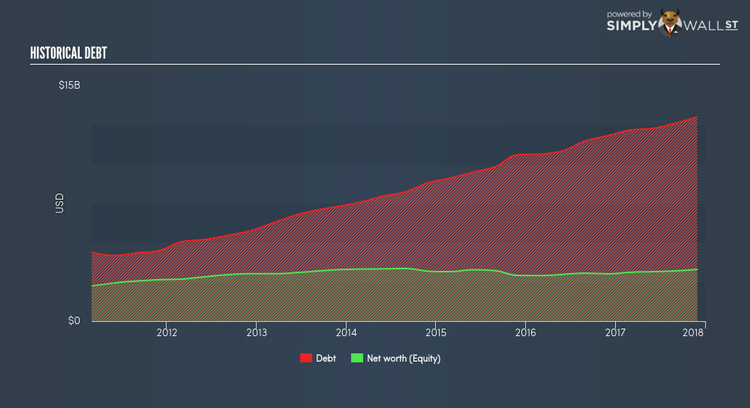Did CarMax Inc (NYSE:KMX) Create Value For Shareholders?

CarMax Inc (NYSE:KMX) delivered an ROE of 21.99% over the past 12 months, which is an impressive feat relative to its industry average of 11.39% during the same period. Superficially, this looks great since we know that KMX has generated big profits with little equity capital; however, ROE doesn’t tell us how much KMX has borrowed in debt. In this article, we’ll closely examine some factors like financial leverage to evaluate the sustainability of KMX’s ROE. Check out our latest analysis for CarMax
Peeling the layers of ROE – trisecting a company’s profitability
Return on Equity (ROE) weighs CarMax’s profit against the level of its shareholders’ equity. For example, if the company invests $1 in the form of equity, it will generate $0.22 in earnings from this. In most cases, a higher ROE is preferred; however, there are many other factors we must consider prior to making any investment decisions.
Return on Equity = Net Profit ÷ Shareholders Equity
ROE is measured against cost of equity in order to determine the efficiency of CarMax’s equity capital deployed. Its cost of equity is 12.58%. This means CarMax returns enough to cover its own cost of equity, with a buffer of 9.41%. This sustainable practice implies that the company pays less for its capital than what it generates in return. ROE can be broken down into three different ratios: net profit margin, asset turnover, and financial leverage. This is called the Dupont Formula:
Dupont Formula
ROE = profit margin × asset turnover × financial leverage
ROE = (annual net profit ÷ sales) × (sales ÷ assets) × (assets ÷ shareholders’ equity)
ROE = annual net profit ÷ shareholders’ equity
The first component is profit margin, which measures how much of sales is retained after the company pays for all its expenses. The other component, asset turnover, illustrates how much revenue CarMax can make from its asset base. Finally, financial leverage will be our main focus today. It shows how much of assets are funded by equity and can show how sustainable the company’s capital structure is. Since financial leverage can artificially inflate ROE, we need to look at how much debt CarMax currently has. The debt-to-equity ratio currently stands at over 2.5 times, meaning the above-average ratio is a result of a large amount of debt.
What this means for you:
Are you a shareholder? KMX’s above-industry ROE is encouraging, and is also in excess of its cost of equity. However, with debt capital in excess of equity, ROE might be inflated by the use of debt funding, which is something you should be aware of before buying more KMX shares. If you’re looking for new ideas for high-returning stocks, you should take a look at our free platform to see the list of stocks with Return on Equity over 20%.
Are you a potential investor? If you are considering investing in KMX, basing your decision on ROE alone is certainly not sufficient. I recommend you do additional fundamental analysis by looking through our most recent infographic report on CarMax to help you make a more informed investment decision.
To help readers see pass the short term volatility of the financial market, we aim to bring you a long-term focused research analysis purely driven by fundamental data. Note that our analysis does not factor in the latest price sensitive company announcements.
The author is an independent contributor and at the time of publication had no position in the stocks mentioned.


